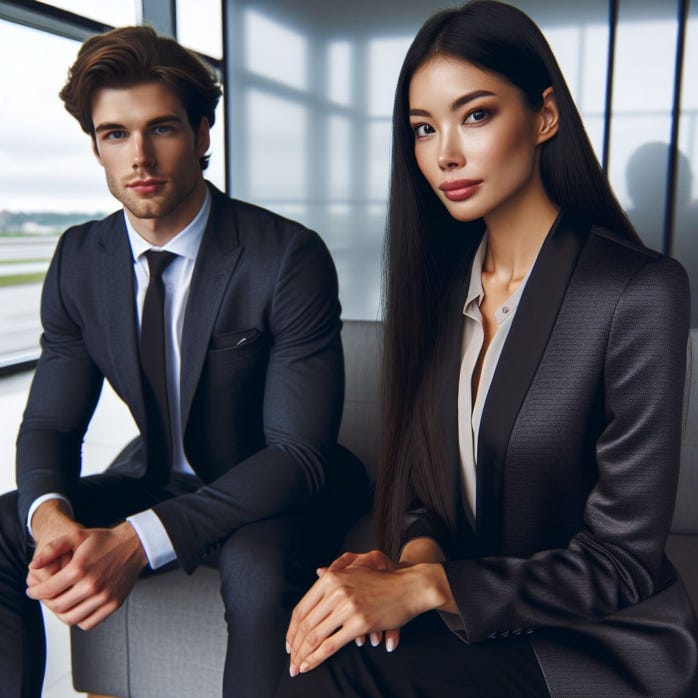Unmasking the Invisible: How Unconscious Bias Shapes Our Daily Lives
Discover how hidden biases shape our interactions and decisions, and learn practical strategies to recognize and address them. Let's make more informed and fairer choices in our daily lives.
Have you ever wondered why you instantly click with some people but not others? Or why specific individuals seem to get the benefit of the doubt while others don't? The answer might lie in something you can't see but is always there: unconscious bias.
These hidden biases influence our decisions and interactions in ways we might not even realize. From hiring practices to everyday encounters, understanding and addressing unconscious bias is crucial for fostering fairness.
This topic became immediately relevant to me as I was hiring a recruiter to join my team. As I interviewed candidates, I noticed how quickly I felt drawn to or resistant to specific individuals. I had to keep returning to the objective criteria and information to ensure I made a fair and informed decision.
Hiring managers often form first impressions of candidates within the first few seconds of meeting them. These snap judgments can significantly influence a candidate's overall evaluation. Studies have shown that four out of five hiring decisions are made within the first 10 minutes of an interview.
Are 10 minutes really enough time to evaluate the fit of a person for a job?
Join me as we dive into the various types of unconscious bias and explore practical strategies for recognizing and addressing them in our daily lives.
What is Unconscious Bias?
Unconscious bias refers to the automatic and involuntary associations or stereotypes that influence our understanding, actions, and decisions. These biases can lead to poor decision-making and even discrimination, especially in hiring processes.
As we explore this topic, I encourage you to engage in honest self-reflection. Consider whether unconscious biases may be influencing your decisions. This process requires vulnerability and a willingness to acknowledge that you, too, might be influenced by these biases.
To illustrate, think of the scene from "The Lord of the Rings" where Frodo reaches Mount Doom. After a long and tough journey, he is about to destroy the ring of power but changes his mind at the last moment, deciding to keep it for himself. Despite his conviction throughout the journey, his gut instinct betrays him at the critical moment.
Similarly, when we rely on gut feelings or follow our hearts in decision-making, unconscious biases can come into play. These biases operate at a subconscious level, affecting our perceptions and actions without our awareness. Just as Frodo couldn't predict his change of heart, we might not realize how our biases influence our decisions.
As decision-makers, we hold significant power to influence people's lives, and it's essential to exercise this power with control and humility. This concept of meekness—power under control—reminds us not to rely on gut feelings when making important decisions. Instead, we should acknowledge that unconscious biases may be at play and commit to a systematic, objective process. By doing so, we can make more informed and fair decisions, minimizing the influence of unconscious bias.
Types of Unconscious Bias
Affinity Bias: Favoring people with similar interests, backgrounds, or experiences.
Confirmation Bias: Seeking or interpreting information that confirms pre-existing beliefs or assumptions.
Halo Effect: Allowing one positive trait to overshadow other aspects of a person’s abilities or character.
Horns Effect: Allowing one negative trait to influence a person's overall perception.
Attribution Bias: Attributing successes to personal qualities and failures to external factors, or vice versa, depending on the person.
Personal Characteristics Bias: Making assumptions about a person’s abilities or characteristics based on gender, age, race, or name.
Beauty Bias: Assuming that more attractive people are more competent or successful.
Scenarios Demonstrating Unconscious Bias
Affinity Bias: Sarah, a manager, is reviewing applications for a new team member. She feels an instant connection with one candidate, John, because they both attended the same university and share a passion for hiking. Despite other candidates having stronger qualifications, Sarah favors John due to their shared background and interests.
Confirmation Bias: During a team meeting, Alex presents a new project idea. Maria, who has always believed Alex is highly creative, interprets his proposal as innovative and promising, even though other team members raise valid concerns. Maria's pre-existing belief about Alex's creativity influences her judgment.
Halo Effect: Emily is impressed that Mark was early for their initial meeting. As a result, she overlooks his lack of experience in key areas and assumes he will excel in all aspects of the job, allowing one positive trait to overshadow other important factors.
Horns Effect: During a performance review, James recalls that Lisa missed a critical deadline last month. This negative incident colors his perception of her overall performance, leading him to undervalue her achievements and contributions throughout the year.
Attribution Bias: Jesse, a hiring manager, reviews resumes for a technician position. She sees Luke's application and notices he worked at a competitor's service center that went out of business. Jesse assumes Luke was part of the reason for the failure, despite his achievements as the top technician for three years. Her attribution bias leads her to dismiss him as a candidate.
Personal Characteristics Bias: During a brainstorming session, Tom dismisses ideas from a younger colleague, assuming they lack experience. He also overlooks suggestions from a female team member, unconsciously favoring male perspectives. Additionally, Tom makes assumptions about another colleague's capabilities based on their ethnic-sounding name, demonstrating biases related to gender, age, race, and name.
Beauty Bias: At a networking event, Rachel is drawn to engage with a particularly attractive attendee, assuming they must be successful and competent. She spends less time interacting with others who may have valuable insights but do not fit her preconceived notions of attractiveness.
Recognizing Unconscious Bias
Recognizing unconscious bias can be challenging because it operates below the level of conscious awareness. However, there are several strategies you can use to become more aware of your own biases:
Self-reflection: Regularly reflect on your decisions and interactions to identify potential biases.
Bias training: Participate in training sessions to learn about various types of biases and strategies for mitigating them.
Seek feedback: Ask for feedback from others to gain different perspectives on your behavior and decisions.
Structured decision-making: Use structured processes for decision-making to reduce the influence of bias.
Diverse interactions: Engage with people from diverse backgrounds to broaden your perspective.
Implicit Association Test: Take the Implicit Association Test to uncover hidden biases. (Warning: this takes courage but is useful!)
Questions to Spot Unconscious Bias
Here are some questions to help determine if unconscious bias might be influencing your decisions or interactions:
Would I make the same decision if this person had a different background (race, gender, age)?
Am I favoring this person because they remind me of myself or someone I know?
Have I considered all individuals equally, based on their qualifications and experience rather than their personal characteristics?
Am I making assumptions about this person’s abilities or potential based on stereotypes?
Have I given each person the same attention and opportunity to present their skills and experiences?
By understanding and addressing unconscious bias, we can make more informed and fairer decisions in all areas of our lives. From recognizing different types of biases to implementing strategies for awareness and mitigation, we have the tools to create a fairer environment for everyone. After all, you wouldn't want to be the subject of negative bias, would you? Let's commit to self-reflection and structured decision-making to ensure our actions are fair and just.








Nicely stated! Brings to mind a premise of The Voice whereby the coaches can only hear the contestant, they can’t see them and hence can’t form an opinion based on appearance.
I watched Wicked last night (finally.) and talked to our friends about this article you wrote.